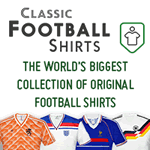

Boston
United
Formed 1933
Promoted to the Football League 2002. Relegated to the Conference North 2007.
Kit History
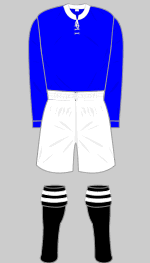
September 1933 a p
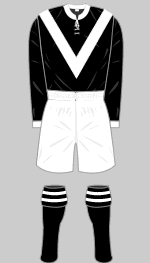
1933-1934 p
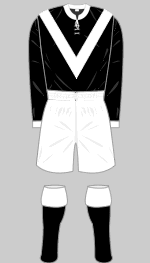
1934-1935 a p q
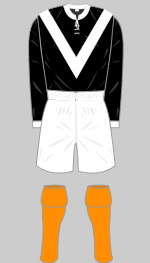
1935-1936 q
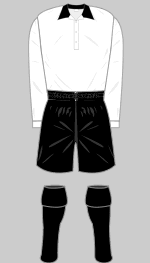
1937-1939 a q
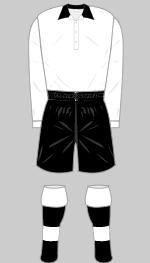
1939-1940 p
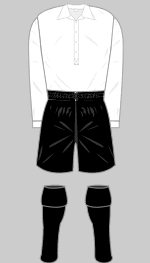
Aug-Dec 1945 p
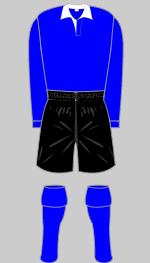
Dec 45-March 48 a l p
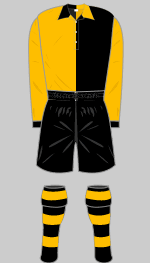
March 48-Oct 48 p
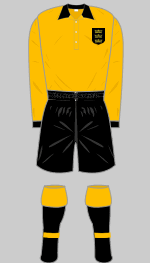
Oct 1948-1950 a p
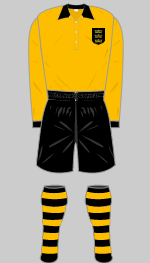
1950-1952 p
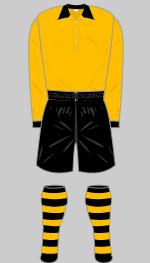
1952-1956 a p q
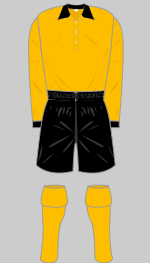
1956-1957 m p
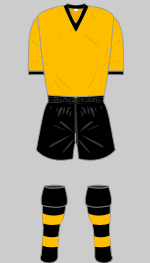
1957-1958 p q
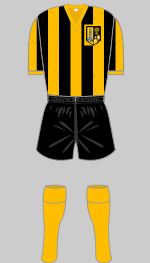
1958-1960 a m q
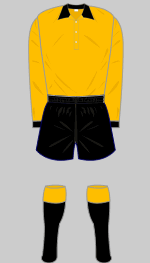
1960-1962 p
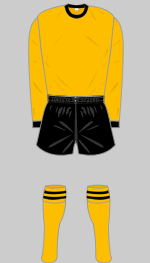
1962-1965 p q
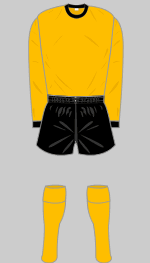
1965-1966 q
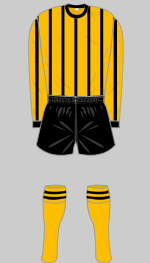
1967-1969 d p q
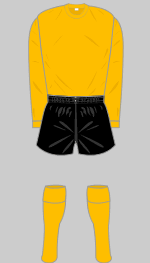
1969-1970 p
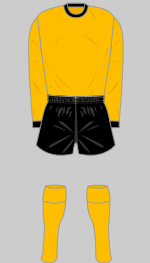
1970-1971 q
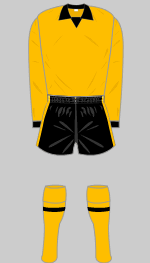
1971-1972 a o
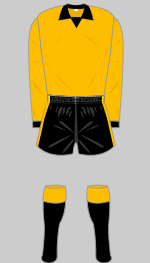
1972-1973 m q
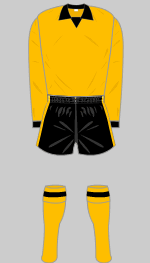
1973-1977 m q
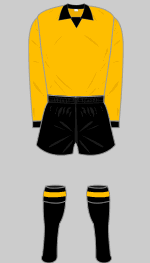
1977-1978 1 i
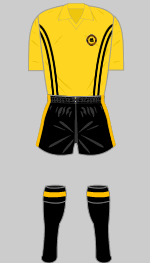
1977-1980 2 q
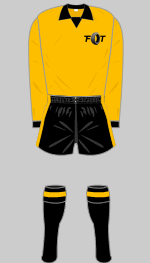
1978-1980 f n q
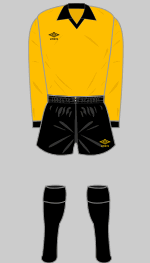
1980-1981 q
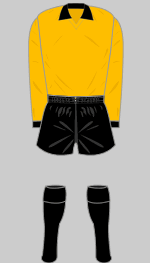
1981-Sept 82 b q
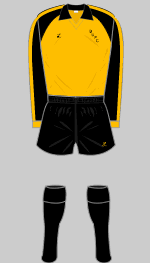
Sept 82-1983 a i
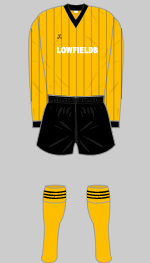
1983-1984 q
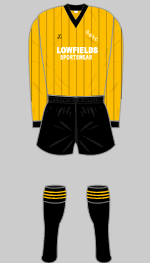
1984-1985 a h q
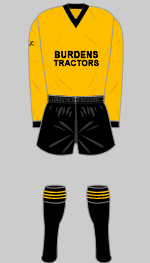
1985-1986 q
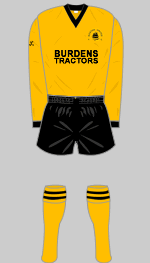
1986-1987 a q
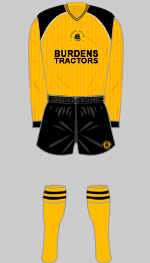
1987-1988 c q
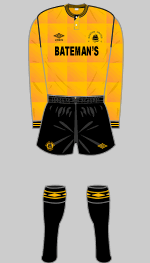
1988-1990 a c q
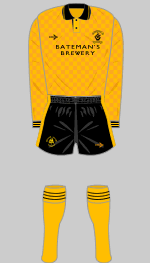
1990-1991 c q
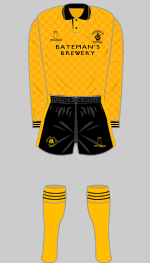
1991-1993 h n

1993-1995 k q
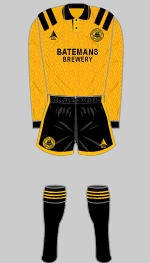
1995-1996 c j k q
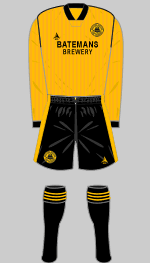
1996-1998 g q
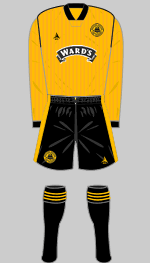
1998-1999 a q
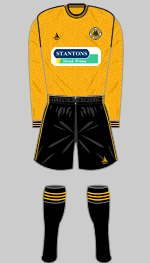
1999-2000 a h q
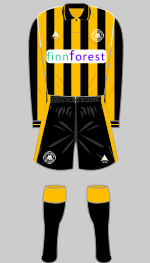
2000-2001 a q
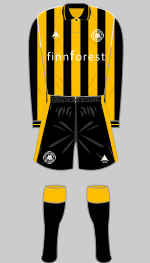
2001-2002 a c q
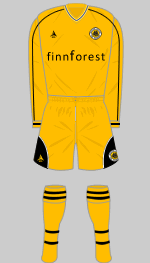
2002-2003 a q
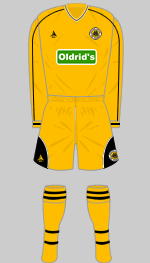
2003-2004 a q
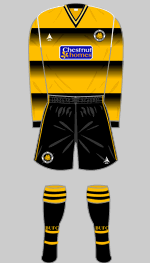
2004-2006 a q

2006-2007 a q
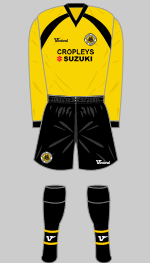
2007-2009 e q
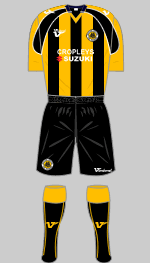
2009-2010 e q

2010-2012 e
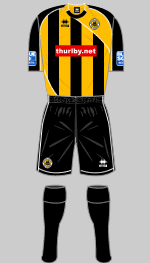
2012-2013 e
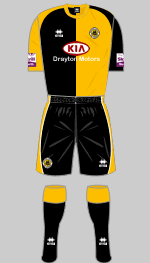
2013-2015 e
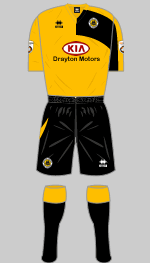
2015-2016 e
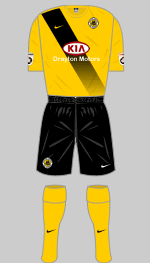
2016-2018 e
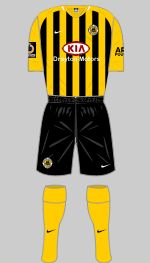
2018-2020 e

2020-2021 e
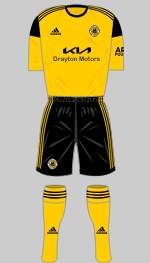
2021-2022 e
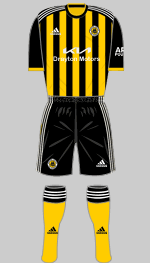
2022-2023 e
Background
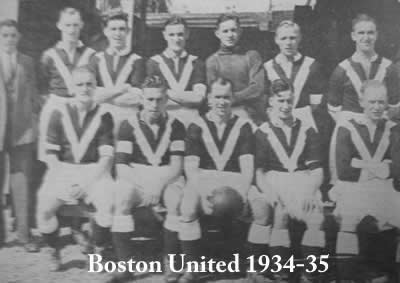 Boston United were formed when the older Boston FC
went into liquidation at the end of the 1932-33 season. A group of supporters
formed a new club that took over Boston's place in the Midlands League
the 1933-34 season. For a short while, the team turned out in the blue
jerseys inherited from the older club but these were quickly replaced
with a striking black shirt with white V.
Boston United were formed when the older Boston FC
went into liquidation at the end of the 1932-33 season. A group of supporters
formed a new club that took over Boston's place in the Midlands League
the 1933-34 season. For a short while, the team turned out in the blue
jerseys inherited from the older club but these were quickly replaced
with a striking black shirt with white V.
The club closed down during the Second World War. They lent out their shirts which were never returned so they appealed for clothing coupons and unwanted tennis shirts to replace the missing kit. On Boxing Day, according to the Lincolnshire Standard, the team wore "new shirts (light blue), knickers (black) and stockings (same blue as shirts). However there are two references in the April editions to the team wearing royal blue shirts while match programmes from the period describe their shirts as "blue." The following season the shirts had faded to dirty white and when the team visited Frickley Colliery (who wore white) the referee ordered them to borrow Frickley's change shirts.
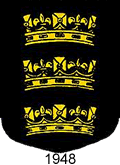 It was decided to adopt new colours of amber and black for the 1948-49 season but the new halved shirts actually appeared in March 1948. The manager did not like the tops because he thought the black panels concealed the players from each other and in October 1948 plain amber shirts with contrasting collars were introduced. The Lincolnshire Standard (18/09/48) reported on a council meeting where there was a discussion over whether to grant the football club permission to wear the town crest on their shirts. The mayor reported that they did not have the power to do this but when asked whether there was anything to prevent the team from adopting it anyway, the answer was, "No," prompting laughter in the chamber. The badge that was used by the club consisted of the central shield element of the town's coat of arms, the three crowns representing Boston's important landowners in the 16th century, the Dukes of Richmond, Suffolk and Brittany.
It was decided to adopt new colours of amber and black for the 1948-49 season but the new halved shirts actually appeared in March 1948. The manager did not like the tops because he thought the black panels concealed the players from each other and in October 1948 plain amber shirts with contrasting collars were introduced. The Lincolnshire Standard (18/09/48) reported on a council meeting where there was a discussion over whether to grant the football club permission to wear the town crest on their shirts. The mayor reported that they did not have the power to do this but when asked whether there was anything to prevent the team from adopting it anyway, the answer was, "No," prompting laughter in the chamber. The badge that was used by the club consisted of the central shield element of the town's coat of arms, the three crowns representing Boston's important landowners in the 16th century, the Dukes of Richmond, Suffolk and Brittany.
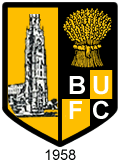 In 1956, the club came to national attention after beating Derby County
6-1 at the Baseball Ground in the FA Cup Second Round. That same year
they finished as runners up to Peterborough United in the Midland League,
their highest position to date. Two years later, United joined the Southern
League. A new crest was introduced to mark this step up that featured the tower of St Botolphs Church, a prominent landmark known localy as the "Boston Stump."
In 1956, the club came to national attention after beating Derby County
6-1 at the Baseball Ground in the FA Cup Second Round. That same year
they finished as runners up to Peterborough United in the Midland League,
their highest position to date. Two years later, United joined the Southern
League. A new crest was introduced to mark this step up that featured the tower of St Botolphs Church, a prominent landmark known localy as the "Boston Stump."
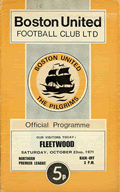 Life in the Southern Leaguue proved too hard for the team and United resigned in 1961.
By 1964 the club was on the verge of extinction and the name was only
kept alive by running an amateur team in the local Boston & District
League.
Life in the Southern Leaguue proved too hard for the team and United resigned in 1961.
By 1964 the club was on the verge of extinction and the name was only
kept alive by running an amateur team in the local Boston & District
League.
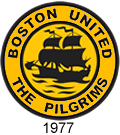 After sorting out their finances, Boston began the long climb back to
senior non-league football and in 1968 they became founder members of
the Northern Premier League.
After sorting out their finances, Boston began the long climb back to
senior non-league football and in 1968 they became founder members of
the Northern Premier League.
The team are known as "The Pilgrims" after the Pilgrim Fathers who sailed from England in 1620 and settled near Boston, Massachusetts. Their ship, The Mayflower, first appeared on match programmes in 1971-72 but did not feature on the team shirts until the 1977-78 Northern Premier League cup final. The special shirts ordered for this match made occasional appearances up until 1980.
The Seventies brought four NPL titles, two
League Cups and further adventures against League opposition in the FA
Cup. Boston were now strong candidates 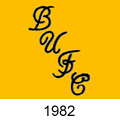 for election to the Football League
but in 1978, inspectors found that their ground was not up to League standards
and Wigan Athletic were nominated instead. The following year the club
became founder members of the Alliance Premier League (the
for election to the Football League
but in 1978, inspectors found that their ground was not up to League standards
and Wigan Athletic were nominated instead. The following year the club
became founder members of the Alliance Premier League (the 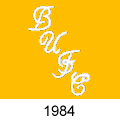 forerunner of
the Conference) and set about rebuilding their ground.
forerunner of
the Conference) and set about rebuilding their ground.
In 1999 Boston regained their place in the Conference that they had lost
six years earlier. Two years later the club turned fully professional
and clinched the Conference title to achieve automatic promotion to the
Football League. The gloss was taken off this achievement when an FA 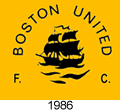 investigation
uncovered irregularities that led to the resignation of the manager and
deduction of four points before the league campaign started. Boston overcame
this obstacle and retained their place in the League.
investigation
uncovered irregularities that led to the resignation of the manager and
deduction of four points before the league campaign started. Boston overcame
this obstacle and retained their place in the League.
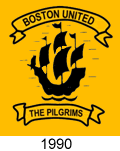 In 2006-07 the club faced serious financial difficulties. On 5 May, Boston
were losing at Wrexham, a result that would confirm that they would
be relegated back to the Conference. Before the match ended, the club
entered into a Company Voluntary Agreement, an arrangement to protect
the club from its creditors. As a consequence the ten-
In 2006-07 the club faced serious financial difficulties. On 5 May, Boston
were losing at Wrexham, a result that would confirm that they would
be relegated back to the Conference. Before the match ended, the club
entered into a Company Voluntary Agreement, an arrangement to protect
the club from its creditors. As a consequence the ten-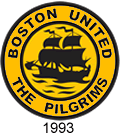 point penalty incurred
when clubs enter financial administration was applied in the current season,
when it would no longer make any difference as they were already relegated. However, at the Conference annual general meeting held in June 2007, the decision was taken to demote Boston directly into Conference North, the sixth
point penalty incurred
when clubs enter financial administration was applied in the current season,
when it would no longer make any difference as they were already relegated. However, at the Conference annual general meeting held in June 2007, the decision was taken to demote Boston directly into Conference North, the sixth 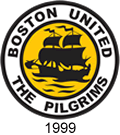 tier of English football.
tier of English football.
At the close of the 2007-08 season the club remained in administration and, under Conference rules, were relegated to the next lowest tier, the Unibond League Premier Division. The long climb back began when Boston won promotion back into the Conference North via the play-offs in May 2010.
The 2019-20 season was the last to be played at the club's old York Street ground but the move into their new Pilgrim Way Stadium (subsequently renamed the Jakeman's Community Stadium for sponsorship reasons) was delayed due to the Covid-19 pandemic. After finishing third in a curtailed season on points-per-game, The Pilgrims lost to Altrincham in the play-off semi-final behind closed doors, the last game to be played at York Street. They shared Gainsborough Trinity's home ground for the first part of the following season but played only three matches there due to an outbreak of Covid in their playing squad. In December 2020 Boston finally moved into their new ground but it was not until July 2021 that spectators were admitted.
Sources
- (a) Boston United FC Ken Fox's excellent site includes comprehensive historical and statistical information.
- (b) Scarborough FC - Images of Sport (Paul Eade 2002)
- (c) Alliance to Conference (John Harman 2005)
- (d) Pete's Picture Palace
- (e) Boston United Official Site
- (f) Alick Milne
- (g) Andy Birkett
- (h) Mark Holland
- (i) Ralph Pomeroy
- (j) Ken Fox
- (k) Mark Alton
- (l) Keith Ellis
- (m) Simon Monks
- (n) Michael Gluck
- (o) Will Pike
- (p) Alick Milne
- (q) Christian James
Crests are the property of Boston United FC. 1971-72 programme courtesy of Boston United FC website.